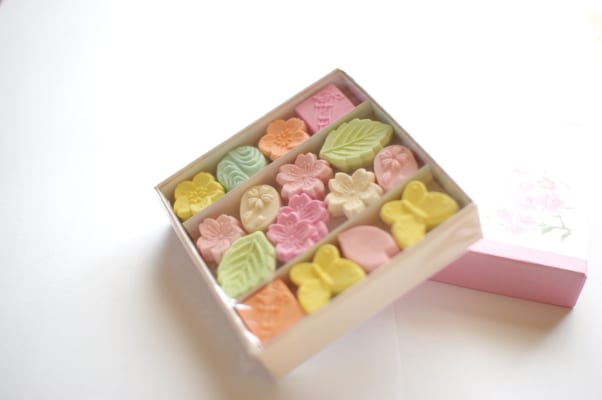The Culture of Omiyage or Souvenir in Japan
You are going on a trip in Japan? Don't forget to buy a souvenir for your co-workers!

One of the Japanese customs that I have unconsciously acquired the most in my time living here and that even in the periods when I have returned to my country I still do on some occasions is the culture of omiyage.
The word omiyage (お土産, おみやげ) is often translated as ‘present’ or ‘souvenir’, and although it’s not a wrong translation, it’s not exactly the kind of memory or souvenir that you probably all have in mind right now. When the Japanese speak of omiyage, they usually refer to food, generally small sweets or snacks with characteristics of the area that has been visited or is going to be visited in question.
In Japan it is quite common for each area to have a typical product, like apples in Aomori or takoyaki in Osaka. When this product is something that can be easily transported and lasts for several days, this product will surely be the omiyage of choice for the majority. But as however that rarely happens, the most common thing is, as I mentioned before, sweets and snacks with a flavor of that typical product. For example, if you go to Okinawa you will see many sweets and snacks with sweet potato flavor, typical of the area while in Kyoto almost everything has green tea, famous in the region (especially for Uji). The maximum exponent of this is Nestlé with its Kit Kat flavors depending on the region. Not all of them have been marketed for a year or so, but a few years ago there were two special types of Kit Kat in each region, which you could only buy in that region. For example, in Okinawa there was a sweet potato Kit Kat as the main flavor, and a strawberry Kit Kat as a secondary.
As some of you may already know, Japan is a country that places great importance on social obligations, and there are certain unwritten rules that all or most follow. Many of them related precisely to the fact of buying or giving a gift. There are many situations in which the protocol requires that a gift be given, or it’s not mandatory but gives a better impression of you (for example business meetings between two companies, etc). The fact of buying an omiyage when you return from a trip (even if it’s a trip of a day or two) is one of these obligations that is more established. It’s done especially at work, since your colleagues have had to work more in your absence to cover your part of the work, so it’s a way to thank and apologize for the inconvenience. Also obviously to the family, and it depends on the relationship, to your friends (although that is already more optional). One of the things that I ended up liking the most about my shared house is that every time a member of the house went on a trip, or returned to their hometown, when they returned they brought a souvenir.
So if you travel through Japan you will see piles of omiyages in local stores around tourist places, but also inconvenience stores (called konbini in Japanese), train stations or airports. There is always a great variety in both size and content, so you can choose the one that suits you best depending on how many people it’s aimed at (4, 8 or 12, etc). In addition, like everything that has to do with gifts in Japan, the presentation is meticulously cared for and usually it’s a nice box wrapped in a colorful or elegant paper with several pieces of the product wrapped individually (in Japan it’s quite common that inside from the main bag or box the product comes different pieces wrapped in individual bags).
Some people say that bringing food instead of the typical souvenirs is a matter of space and practicality, and I agree with that idea. When my parents came to see me in Japan, one of my mother’s headaches was that if she bought some workmates a gift (for some special reason, like they had just had a baby or something) then she felt that she had to buy from all or the others might get mad at her. But if she bought from all of them she ended up spending a lot of money and taking up too much space in the suitcase. In that regard, the concept of the Japanese omiyage seems to me the ideal solution: it’s relatively cheap, and allows all your colleagues to enjoy it (if there are many, you can bring two boxes or two different products to try). It’s also much easier than having to think about a gift for each person, taking into account their tastes, preferences, etc. So this way you save headaches and problems.
What do you think of this Japanese custom? Is there something similar in your country, or do you only buy souvenirs for those closest to you and more like the typical t-shirts and caps ?
If you want to know the best souvenirs to buy on your trip to Japan, you can read these articles!
▽ Related Article ▽
▼ Editor’s Picks ▼
Written by
From Barcelona to Tokyo. Coffee & Adventure lover.
I started to like Japan because of the anime, music and dramas, but after my first trip to the country I found what I love the most: traveling around, the culture and history. I have travelled a lot in Japan, but I still have many places to discover that I want to share with you. Let’s discover Japan together!
Also, as a foreigner living in Japan for over 6 years I understand what kind of things are difficult when you move here and I want to help other people in the same situation that I have in the past.


















